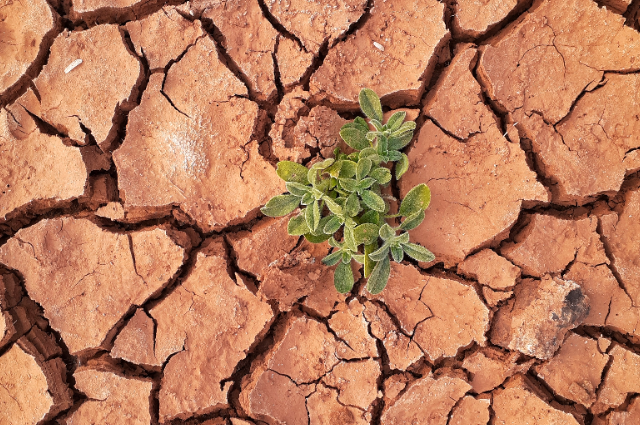
Photo by Renzo D'souza on Unsplash
What do you say when somebody asks you – ‘How are you?’
“I’m Good. How about you?” The reply to the question has been modified these days with - “I’m cool. Hope you’re all ‘cool’ too”!
Why just that? when somebody seems too anxious, she/he is consoled by saying – ‘Chill bro!’ or ‘Calm down dude’!!
It’s such a paradox, that we humans want ourselves to stay cool and calm and chill out, but can easily survive, by letting our planet Earth experience all the hotness and hue!
BACKGROUND:
Every country’s surrounding can be rightly regarded as its ‘natural laboratory’. For example, a very high concentration of iridium in the Kutch district provided evidence of a massive meteoritic impact to have led to dinosaur extinction, 65 million years ago. The environmental history of the Indus or Sindhu River valley civilization, tells us the story of the transformation of a physical geography into a cultural entity.
A BRIEF INTRODUCTION:
Earth has tall mountains, deep valleys, sculpted landforms, long-winding coastlines, hot mineral springs, active volcanoes, diverse soil types, mineralized areas, and globally important fossil-bearing sites. Yet, many countries are found painting their roofs white, hitting beaches and waterfalls too often, and increasing artificial coolers frequently. Nature’s natural beauty is not pleasing or soothing somehow. All thanks to the rising temperatures and Global warming!
“The era of global warming has ended, because the era of global boiling has arrived”, said UN Secretary-General Antonio Guterres.
Impacts of climate change include:
- Land Degradations.
- Crop yields getting affected.
- Driving lower livestock productivity.
- Increasing the risk of agricultural pests & diseases.
- Undermining food-security.
- Water scarcity and hence droughts.
- Shifting rainfall patterns.
- Intensifying heat-waves.
- Deforestation.
- Extensive flooding.
- Volcanoes and cyclones.
Not to forget Brazil’s Amazons – Well, we all know that the Rainforests are universal treasures. The Amazon Basin spreads across millions of hectares in multiple countries, hosting massive sinks of sequestered carbon. These rainforests harbour a rich biodiversity and 400 indigenous groups, whose presence, made most of the Amazon survive, despite relentless pressure to convert ‘forests’ into ‘farmlands’.
But it has become a matter of grave concern today, that deforestation in the Amazon rainforest in Brazil is increasing rapidly. Even satellite images show 4,200 sq. km of forests to have been destroyed.
According to the Intergovernmental Panel on Climate Change (IPCC)’s 6th Assessment Report – the past decade i.e. 2011-2020 was warmer by 1.09℃ than the period from 1850-1900, and the 1.5℃ global threshold is likely to be breached soon.
Whom to blame? Definitely not the environment, but those living in the environment. In the name of Industrialization, the entire civilization got hampered! Under the helms of ‘global superiority’, ‘natural priority’ got forgotten! And due to ‘fleeting urbanization’, ‘rational evolution’ sought deterrence!
Carbon dioxide emitted by the developed nations long ago, has accelerated the carbon footprint worldwide, at present.
Thus, principles of CBDR (common but differentiated responsibilities) where ‘polluters pay to compensate for the loss of developing nations', has become the new rule, in order to reduce mortalities on the planet.
Before heading on to global steps and plans to tackle this issue, let’s visit the Indian Sub-continent and understand some of our challenges with respect to global warming, and the actions taken to mitigate the same.
Welcome to Bharat!!!
Here’s a geographical map of our Nation which explains the different physical relief features spread from east to west and north to south.
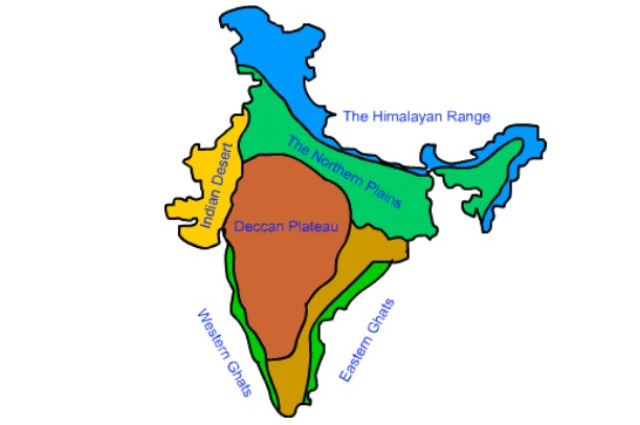
Starting from the North are situated – the Himalayas. Himalayas serve as natural protectors of the country, which not only protect us from extreme climatic conditions but also hold geopolitical significance too. Himalayas are divided into 3 parts namely – Greater Himalayas, Lesser Himalayas, and Siwalik Himalayas.
Next in the line are the Northern Plains – which remain fertile due to rivers flowing through the Himalayas & alluvial soil deposition. Hence highly suitable for agricultural activities.
Then, we come to the Northwestern part of India’s Arid region where there is – the Thar desert, also known as ‘The Great Indian Desert’ situated amidst the Aravallis.
After this, comes, India’s oldest and most suitable landmass namely – The Peninsular Plateau. The plateau is further divided into 2 parts:
- Central highlands – located to the north of Narmada
- Southern part – Deccan plateau.
Then, we head to the Islands of our Nation. India has 2 island groups namely –
- Andaman & Nicobar Islands in the Bay of Bengal.
- Lakshadweep Islands in the Arabian Sea.
The last division includes the coastal plains namely: Western Ghats & Eastern Ghats.
Having understood the beautiful relief features, let us glance over the negative impacts that global warming is having on them. Knowing this would drastically reduce our ‘relieved feeling’, owing to the conditions of these relief features.
Conditions of the physical relief features:
- Aravalli ranges’ deforestation is causing the Thar Desert to expand towards the East.
- A study points out that there has been an overall decrease in snow cover in key river basins. A decrease of 9% in the Chenab basin and 19% in the Beas. Even the Ravi & Sutlej basins saw 23% less snow area in comparison to 2019-20. The overall decrease in the area under snow has been recorded at about 18.5%.
- 19 tribal villages across River Godavari got completely cut-off from the outside world due to heavy inflows of water and submergence.
- El Nino, unfavorable Madden Julian Oscillation & a lesser number of pressure weather events, made the country witness the driest of monsoon seasons. A monsoon season without the monsoons – the sole outcome of such driest conditions! 1/3rd out of the total 36 sub-divisions, reported deficit rainfall in the country. This includes – Eastern UP, Bihar, Jharkhand, Chhattisgarh, Gangetic West Bengal, Kerala, Southern interiors of Karnataka, Rayalaseema, Maharashtra & Marathwada. Normally, there are 16.3 days of a low-pressure system in August. However, this time, only 9 low-pressure days were observed.
- With an increased variability of monsoons & rapidly depleting groundwater tables, large parts of India are reeling under water stress. A number of peninsular regions like Bundelkhand, and Vidarbha have been facing recurring drought-like situations.
- Currently, drains in cities largely do not recharge groundwater, because it is either linked/lined with concrete or due to sludge deposited at the bottom, making it difficult for water to percolate. Hence, climate change could lead to a three-fold groundwater loss from 2041 to 2080 in India, says the University of Michigan.
- Rivers are changing their courses. E.g. Kosi in Bihar.
- Stubble burning is radically spreading out pollution. A report said – ‘untreated rice straw takes 4-8 weeks to disintegrate, which is too long for the average farmer to wait to be able to sow the winter wheat crop’. The other option is to employ labor, who will cut the stalk & pile it into bundles. But that turns too expensive and unaffordable for >90% of the farmers. Which is why, the simplest solution is a “₹1 match-box and ₹100 worth of diesel and clearing fields”. The simplest way of harvesting, yet worsens air pollution, especially in states like Punjab, Haryana, UP, Delhi NCR, etc.
- During the pandemic, a migrant labor camp resident said – “we don’t have enough water to drink, how can we wash hands multiple times a day?!”
- Water deficiency has locked up many inter-state waters into controversies. Be it Ravi-Beas, Narmada, Godavari, Krishna, Cauvery, Vansadhara, Mahadayi; besides the Indus & the Brahmaputra.
- Increased traffic congestion leads to air pollution.
- Loudspeakers and drums played beyond the normal levels during festivals and celebrations, adding to the noise and environmental pollution.
- Disposing of waste in water sources causes water pollution.
- Frequent logging of trees and forests in order to make use of wood, fodder, and surroundings for luxuries and holidays.
- Fossil fuel burnings produce energy for electricity and power generation.
- 29.77% of India’s geographical area is facing land degradation due to vegetation degradation, wind, and soil erosions.
- Increasing usage of HYV (high-yielding variety) seeds to enhance production in farming, through excessive pests and fertilizers, causing depletion of soil fertility and decrease in groundwater.
- Using water bodies to attract tourists became a threat to several urban lakes in India. E.g.: Ashtamudi lake in Kerala’s Kollam city got polluted due to oil spillages by motorboats, and wafer packets clogged natural channels.
- In India, many women in poor households used firewood or dung cakes for cooking. This caused indoor pollution because these sources of energy released carbon monoxide and carbon dioxide into the atmosphere.
- Flash floods in the vicinity of Amarnath caves were a consequence of global warming.
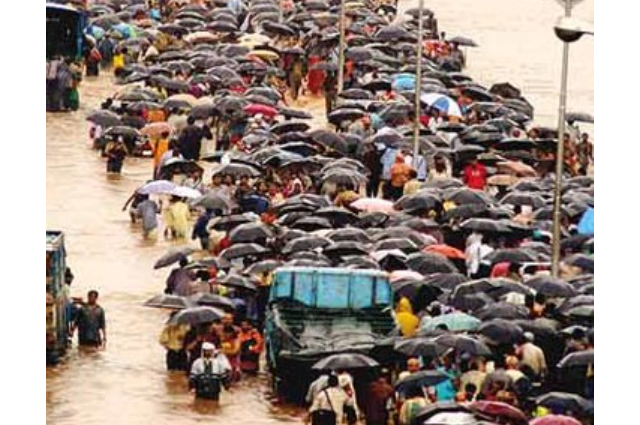
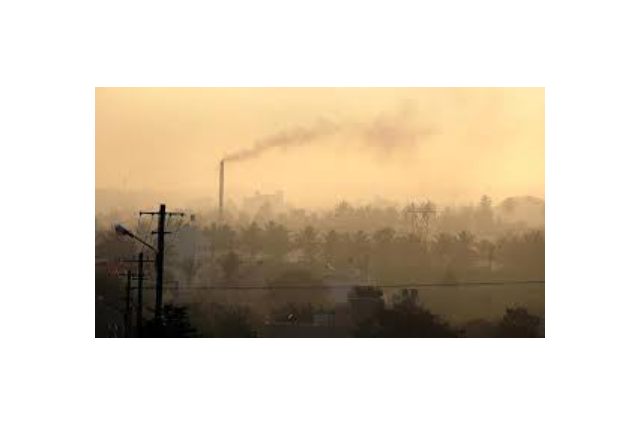
A Flow-Chart below explains few causes of pollution: -
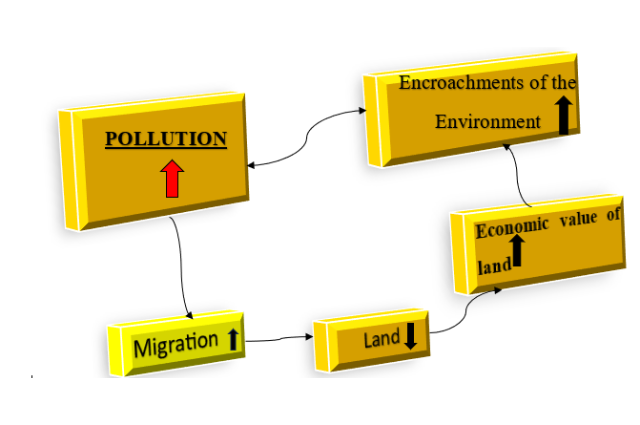
The Global Climate Risk Index (2021) ranked India – 7th most affected country by weather extremes. The pressure to speed up mitigation and adaptation is at an all-time high.
At times, the meaning of an unknown word is known, not by knowing its synonym or simplified meanings, but by understanding its antonym!
Thus, India too took, and is taking steps, not in a top-down approach, but, a bottom-up method, to resolve climate issues.
Below listed are some of the steps and commitments:
- India has launched mega solar & green hydrogen missions.
- The Shoonya programme by NITI Aayog aims to increase the adoption of e-vehicles, in order to enhance clean technologies.
- India has some dedicated initiatives towards adaptation such as the National Action Plan on climate change.
- Irrigation & Flood control department rejuvenated 6 dry water-bodies by channelizing water from drains during monsoon. The department connected pipelines to drains, which took away only the top layer of water from drains when it rained. This helped recharge groundwater.
- Mangrove afforestation policies, restoration of sea-grass meadows, eco-restoration of sacred groves, beach cleaning and development undertaken.
- The Odisha Wetland Authority approved the implementation of an integrated management plan to conserve 2 of its largest lakes – Lake Chilika (the country’s largest brackish water lagoon) and Lake Ansupa (the state’s largest freshwater lake).
- The government’s Swachh Bharat Mission (Gramin & urban) sought success through various measures, which made the country ODF-free. On the 150th birth anniversary of Mahatma Gandhi, PM Modi declared the country ‘Open Defecation Free’ (ODF), claiming success for the initiative under which every household now has access to toilets. The mission also focuses on the proper implementation of Solid and liquid waste management by segregating plastic waste, organic waste and greywater waste.
- The Indian government introduced Liquified Petroleum Gas (LPG) in June 2013, in order to provide access to clean energy and alleviate the public health burden.
- In 2016 – the Modi government launched the LPG scheme as the Pradhan Mantri Ujjwala Yojana (PMUY) which intended to increase subsidy for LPG from ₹12,000cr in 2016-17 to ₹21,000cr in 2017-18, and 94% of all households had an LPG connection as of September 2019.
- Union government launched a mobile app – ‘Jaldoot’, jointly developed by the Rural Development + Panchayati Raj Ministries, to monitor the groundwater levels across the country. Regular data from the Jaldoots would be integrated with the database of the National Water Informatics center, which will be utilized for analysis & shall help in conservation.
- ‘Mission Amrit Sarovar’ – a unique water conservation initiative is yielding good results with more than 63,000 water bodies being developed within a year with the help of community participation and the support of technology.
- ‘Catch the Rain’ campaign has yielded good fruition.
- India has set a target of attaining ‘Net Zero’ by 2070.
Net Zero = cutting greenhouse gas emissions as close to zero as possible. - India is one of the top 5 countries in the world in terms of having installed a ‘renewable energy capacity’.
- Launched in 2019, the PM-KUSUM scheme (Pradhan Mantri Kisan Urja Suraksha Evam Utthaan Mahabhiyan) aims to help farmers access reliable solar power for irrigation, reduce power subsidies, and decarbonize agriculture.
The Kyoto Protocol adopted at COP3 in 1997 --} committed industrialized economies to limit & reduce greenhouse gas emissions.
COP21 ended with the 2015 Paris Agreement in which --} Member countries agreed to keep global warming <2℃, ideally not more than 1.5℃.
The Glasgow summit ended with the --} climate pact that called for the ‘phasing down’ of unabated coal power.
Governments and Nations worldwide have committed to reducing greenhouse gas emissions and put forth a record-shattering U.S.$356 million in support of protecting the most vulnerable. During one of the UN summits, a proposal of a “30 by 30” agenda sought debates, where 30% of the Earth’s land & oceans, would gain protected status by 2030. However, this is still in the pipeline to be worked out.
As per an IPCC report, 3-14% of all species on earth face a very high risk of extinction, with devastating losses at higher temperatures. Further temperature rise, may result in catastrophic and irreversible changes. 70-90% of coral reefs across the world may die and at 2℃, none, including other lives, would be left alive. Even a 1℃ hotter planet is not a steady state. It means that limiting warming to 1.5℃ requires global greenhouse gas emissions to be reduced by 43% by 2030. The Paris Agreement said that all countries – rich, poor, developed, and developing, should slash greenhouse gas emissions.
It is time to accelerate global climate action through emission reductions, and scaled-up adaptation, through 4 priority areas of – ‘mitigation, adaptation, finance, and collaboration’. It is time to move from ‘negotiations & plannings’, to the ‘implementations of promises made and pledges taken’, else, “words lose their value if actions don’t match with them”!
Home to an estimated 10% of Earth’s biodiversity, 50 million people & billions of trees; the vast Amazon is a vital carbon sink, carrying the highest potential to curb global warming. Thus, understanding the significance and its impact in the long run, also keeping in mind, its disastrous condition at present, the 8-Nation group of the South American countries that share the Amazon basin, namely – Bolivia, Brazil, Colombia, Ecuador, Guyana, Peru, Suriname, and Venezuela; met at the Amazon Cooperation Treaty Organization and determined to - “Not to let the Amazon reach a point of No return”.
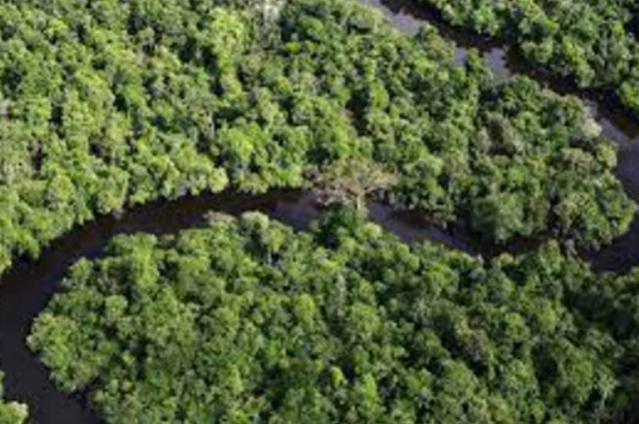
Even some of the 17 Sustainable Development Goals deal with ‘Clean energy, clean water & sanitation, and climate action’.
Recent G-20 summit held in New Delhi also proposed for a ‘green development pact’ to tackle climate-related challenges. In fact, India is one of the 197 countries that has promised to limit the increase to not more than 1.5℃ by 2030.
As rightly stated by Blaise Pascal - “Nature is an infinite sphere, of which, the centre is everywhere & the circumference, nowhere”;
I believe that we need to stop driving our surroundings, by looking into the rear-view-mirror (dwelling onto the past), and look ahead and beyond. With ‘smart getting a lot smarter', let us quickly look into -
Some of the measures which we, as citizens, can take collectively, to reduce warming:
- Most of our households have a ‘bore-well system’, where, once the motor fills the tank beyond a limit, it starts to overflow. If present at home, we do switch off our motors on hearing the water-flow sound. But, when not at home, the water keeps draining in huge amounts, even flowing out till the gates and roads too. This has to be prevented by ensuring to either turn off motors when not at home or to switch to automatic systems, where the machine turns off on its own, once the tank is full.
- Next, ‘Drive less, walk more’. Avoid making use of your vehicles whenever possible. Governments are investing a huge penny to enhance transportation. So, try to commute through public transport systems to avoid congestion and pollution.
- Plant in plenty, not alone on Vana Mahotsav Day or Environment Day, but every day.
- Do not dump waste in water sources.
- To install a ‘Decentralized wastewater treatment system’ – which can reduce our dependence on freshwater sources for secondary usage. In fact, this system worked out well, when tried in a school, in one of the districts of Karnataka. The system showed high REs (removal efficiency) – more than 90% and about 667 liters of greywater was treated daily using the system, which saved 1,80,000 litres of water annually. It also enabled reuse of water and reduced dependence on freshwater sources. Such a robust wastewater management system can be replicated in both – rural and urban settings.
- Employing a boom sprayer named PUSA sprayer (named after a research institute at PUSA, Delhi) which looks like a hybrid of a tractor and an auto-robot, could prove out a reliable option, to add bio-decomposers in farms and fields. The sprayer is loaded with a powder mixed with water and on spraying which, the soil needs to be turned over and irrigated. When done correctly, the straw can be disintegrated in 8 days. With the boom sprayer, an acre can be sprayed in 7 minutes, which normally takes half a day, if done manually. Because it employs natural enzymes, PUSA spray promises to improve soil fertility and also ensures that there will be no burning. Thus, carbon in required amounts, as well as essential soil micronutrients can be retained too. This can prove as a better solution to stem stubble burnings, especially in fields.
- An intervention that has been tried out in various states, and perhaps needs to be taken up on a bigger scale, is the construction of ‘Farm Ponds’. In a recent study on farm ponds in Jharkhand and West Bengal, it was found that the farm ponds aided in superior water control, through the harvesting, not alone of rainfall, but also of surface run-off and subsurface flows. They functioned exclusively as recharge points, contributing to groundwater replenishment. They also helped in providing supplemental irrigation in the kharif season and enhanced irrigation coverage in rabi. The yield of paddy, an important crop in kharif, was stabilized and contributed to greater food security. Farm ponds retained water for 8-10 months and helped farmers to enhance cropping intensity and crop diversification across seasons. The area used, to cultivate vegetables & commercial crops also increased. Farm ponds can be cost-effective and hold immense ability to transform rural livelihoods. They can help enhance water control, contribute to agriculture intensification and boost farm incomes, without harming the soil condition.
Do you remember those COVID times, when ‘Lockdowns’, ‘work from home cultures’, ‘hashtag stay home, stay safe’ slogans, ‘positive/negative numbers’, ‘vaccines’; and much more, had created havocs and fears around?! The pandemic did generate a gloomy morale all over, but also produced some breath-taking results too, on a positive note, with the great rejuvenating outcomes as well.
With absolutely no human movement across the world, many floras and faunas sought revival. Even those animals and species which were on the verge of becoming extinct were found increasing their numbers heartily and healthily.
Many creatures were found to have made a ‘comeback’ in different parts of the world:
- The critically endangered species of Gharials (Gavialis gangeticus) found in rivers such as Ganga, Yamuna, Chambal, and Beas, were found improving their health conditions, owing to no human intervention, other than the ones involved in regular patrolling services. Just like how Tigers are the topmost predators in a forest, Gharials are the topmost predators in a river. They balance the riverine food chain.
- Scientists recorded 4 new species of Corals for the 1st time, from the Indian waters of Andaman & Nicobar Islands.
- Scientists of the Zoological Survey of India discovered 2 new species of freshwater fish, from the north-eastern and northern parts of the country.
- Air quality sought improving prospects, and hence, the pollution rates were kept under check, and in control.
- BOD & COD levels were well maintained.
- Ozone layer was found to have reached a great level, thanks to the immobility of vehicles.
Mary Davis once said - "To Walk into Nature is to Witness a Thousand Miracles"
MIRACLE WITNESSED
Out of all the above-mentioned happy instances of the comebacks, one surprising incident which took place as a miracle was observed in central India, where a Foundation land was found barren and supported absolutely no vegetation, prior to the COVID-19 Lockdown. But the same land regenerated itself during the lockdown, and it now hosts 600 plant species, 16 species of amphibians, 21 species of reptiles, 103 species of butterflies, and 55 species of rare spiders, including the ‘social spider’ which are found only in India & Africa. Even the groundwater was found to have been struck at a depth of 250 feet itself, with water available only at around 700 feet. Occasionally, geckos, hares, wolves & serpents are also spotted.
From the above data, we can see that, if nature is left uninterrupted, without disturbance, or with the least intervention, it can recharge itself and provide to us all – greenery and the so-called, Nature’s beauty. If only we respect and coronate nature and our surroundings with utmost care and concern, will we let ‘Machli, the ultimate “Jal ki rani”, to remain safe and sound, in Jal’, else there’ll be no Jal and no Machli either! Anyways, the above data comes as Great news because the presence of various species indicates a healthy ecosystem.
"The sea is everything.It covers seven-tenths of the terrestrial globe. Its breath is pure & healthy. It is an immense desert,where man is never lonely,for he feels life stirring on all sides.The sea is only the embodiment of a supernatural and wonderful existence. It is nothing but love and emotion;it is the Living finite", writes Jules Verne.
However, as they say – ‘gains shouldn’t be lost’, to keep the progress intact and enhance prosperity even more, the idea of the LiFE (Lifestyle for the environment) mission was introduced by India during the 26th UN Climate Change Conference of Parties (COP 26) at Glasgow, in 2021. It focuses on ‘mindful & deliberate utilization of the environment’ instead of ‘mindless & wasteful consumption’.
Therefore, the time has arrived, to ‘collaborate, communicate, create and think critically, of the ways & means to solve the global issue of warming collectively, not alone as any one Nation, but as – ‘One Earth, one Family, and having one Future’.
CONCLUSION:
In order to have a better future, for future generations, we have to do our bit and play our roles effectively. Remember, the very famous ‘Tom & Jerry’ show too said ‘Tom and Jerry’, although most of the scenes depicted ‘Tom v/s Jerry’, which means, despite all the diversities and differences, we are one single entity, hosted by Mother Earth.
Hence, let us emphasize upon ‘citizen’ welfare over ‘consumer’ welfare, as an objective of progress, for, humans are ‘consumers & producers’ in ‘economics', but are ‘‘citizens’’ in ‘‘societies’’.
The right perspective, therefore, is not of ‘business v/s life’, nor of ‘life v/s life’, but of ‘‘life and life’’; seeking to reconcile goals, through sensible measures. The interests of each, and the interests of all, now coincide, not only within the Nations, but for all Humanities!
